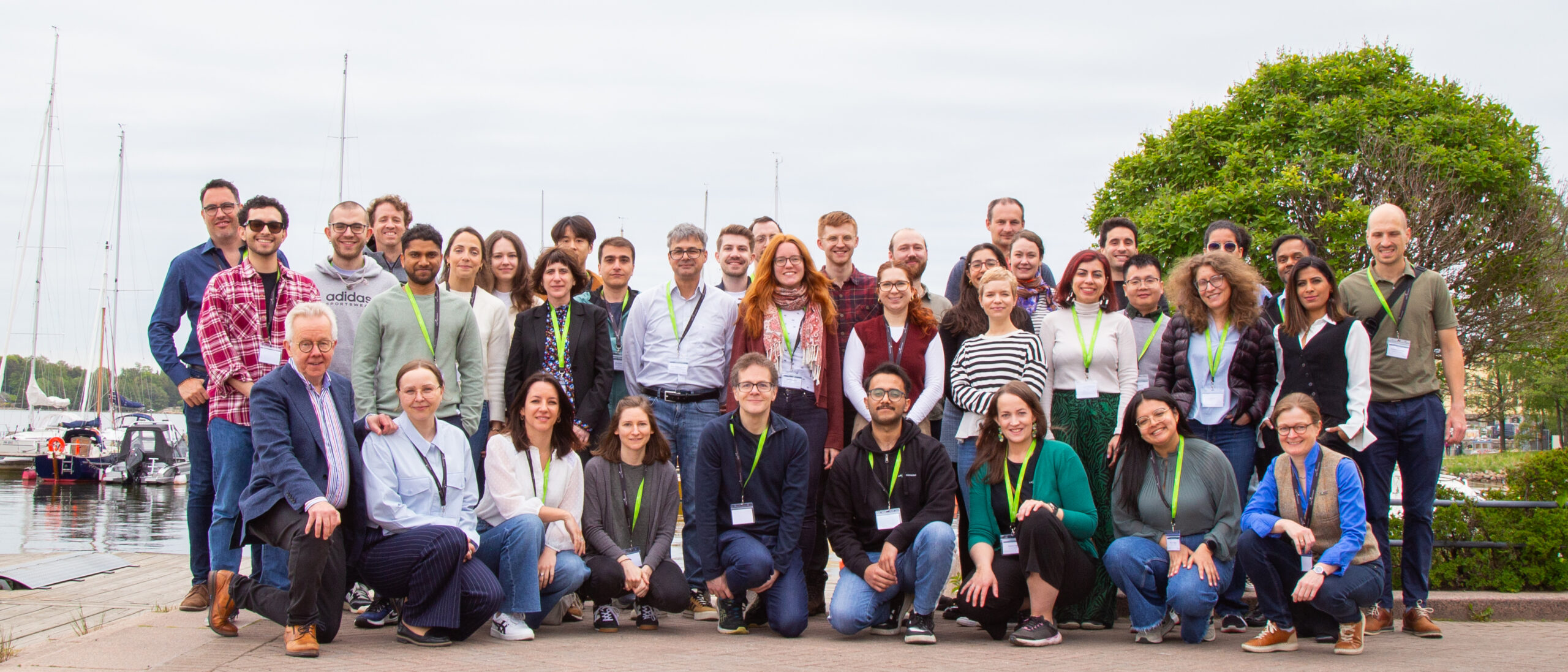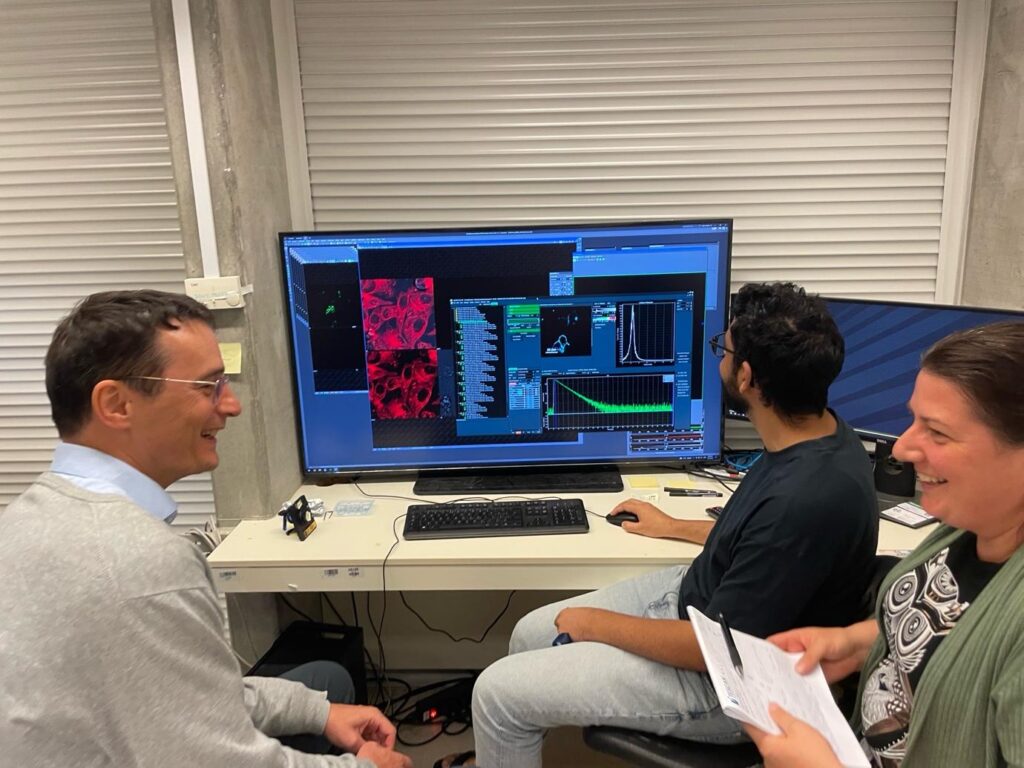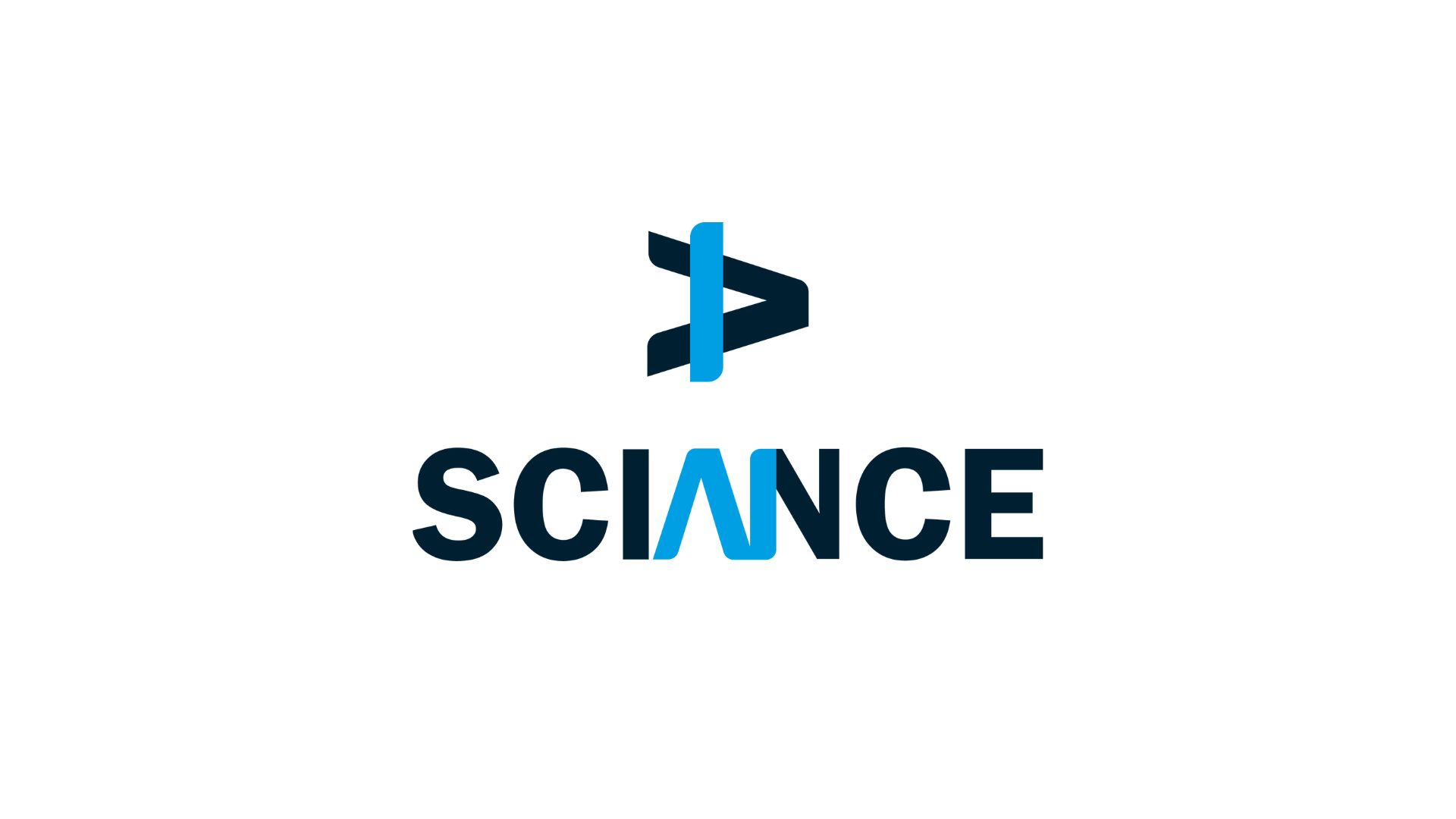
Towards the development of novel SARS-CoV-2 therapeutics
Dr. Veronika Huntosova and her team at the Center for Interdisciplinary Biosciences, Technology and Innovation Park, Pavol Jozef Šafárik University in Košice, Slovakia, are pioneering a novel approach to combat SARS-CoV-2 by developing metal-organic framework (MOF) nanoparticles for targeted drug delivery. These nanoparticles are designed to deliver therapeutics into cells expressing ACE2 receptors, which are key entry points for the virus. The project focuses on utilizing MOFs filled with hypericin, a molecule known for its antivirotic activity. Hypericin’s ability to inhibit the 3-chymotrypsin-like protease, a crucial enzyme in coronaviruses, makes it a promising candidate for this research. The team required advanced imaging techniques to monitor the interaction between MOFs and ACE2 receptors, and for this, they turned to Euro-BioImaging’s Cellular Imaging Hungary Node.

Fluorescence lifetime imaging is an advanced microscopy approach used to explore dynamics in living cells. To get access to this novel imaging approach, Veronika and her team turned to Euro-BioImaging’s Cellular Imaging Hungary Node via ISIDORe, a Horizon Europe funded project which gives researchers the ability to access cutting-edge technology platforms and resources at European research infrastructures free-of-charge.
Using FLIM to monitor the dynamics of hypericin
With valuable funding from ISIDORe, Veronika and her team benefitted from the expert support of Dr. Gyorgy Vamosi and his colleagues in both confocal microscopy and Fluorescence Lifetime Imaging (FLIM). The Node was able to correlate hypericin fluorescence with ACE2 receptor expression. The team used FLIM to monitor the dynamics of hypericin release from the nanoparticles and its internalization into the cells.
“The team at Euro-BioImaging’s Cellular Imaging Hungary Node provided the necessary expertise & tools to correlate hypericin fluorescence with ACE2 receptor expression. Their support was crucial in advancing my research,” explains Veronika.
The results demonstrated that MOFs successfully delivered hypericin to HEK cells expressing ACE2 receptors. The internalization of hypericin and its subcellular localization were confirmed, indicating significant interaction with ACE2 receptors. Further immunostaining revealed changes in mitochondrial structure and activation of autophagy in response to hypericin treatment.
Euro-BioImaging’s Cellular Imaging Hungary Node’s support was crucial, providing insights into the targeting and interaction of the carrier system with ACE2 receptors. The ongoing study aims to further functionalize MOFs by conjugating them with spike proteins for more effective targeting, potentially improving treatment strategies for SARS-CoV-2 infected cells.
A dedicated team and the right technologies
“The facility and resources dedicated to the ISIDORe project were suitable for the specific project we designed,” concludes Veronika. “The measurements performed provided fruitful results and advanced our investigations in the field of targeted delivery and new strategies for the treatment of SARS-COV-2. As the long-lasting side effects are the main syndrome after SARS-COV-2 treatment in the population, the study has raised new questions that will be further investigated.”
We look forward to the next steps in this successful collaboration between Veronika Huntosova and our Node, providing new avenues to improve SARS-CoV-2 therapeutics!
Useful links
Publication in Journal of Colloid and Interface Science
Article about this research on CIB website
This article was adapted from an article that was originally published on the ISIDORe website.
More news from Euro-BioImaging


